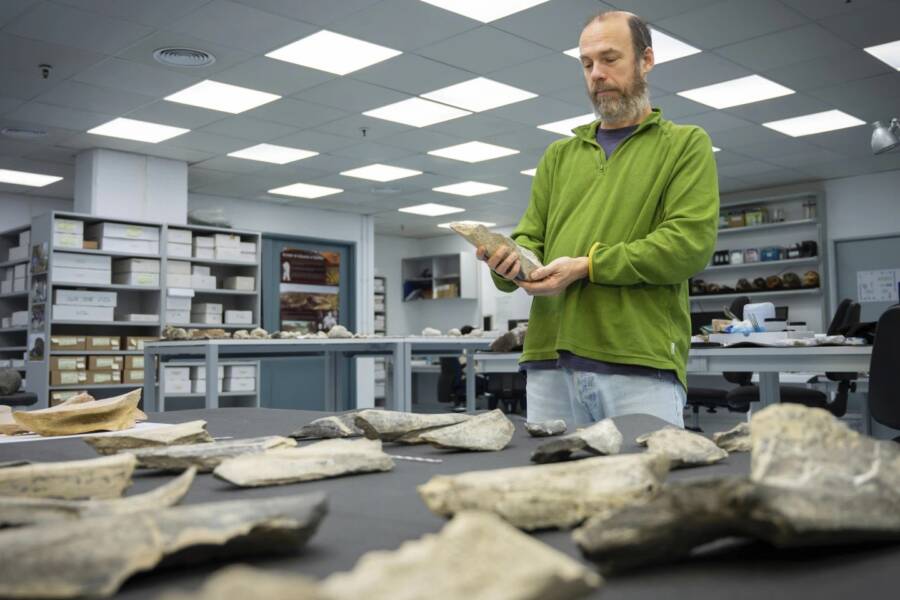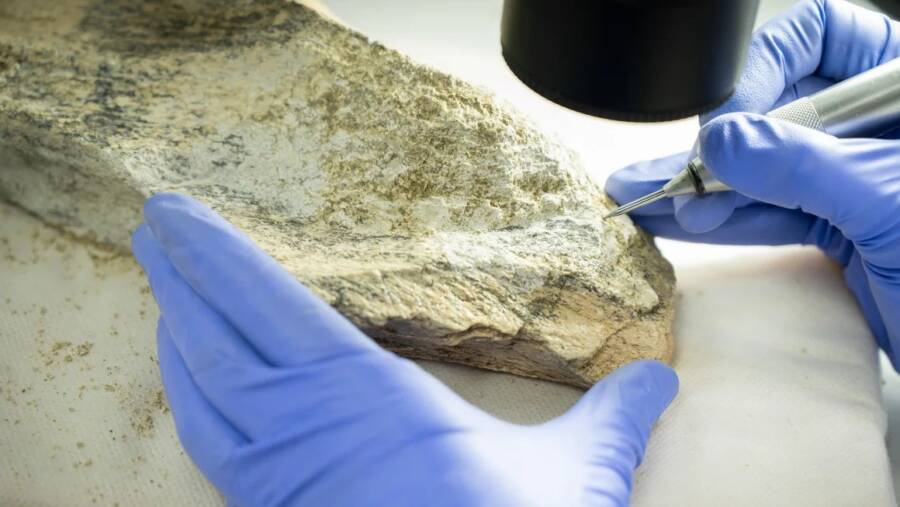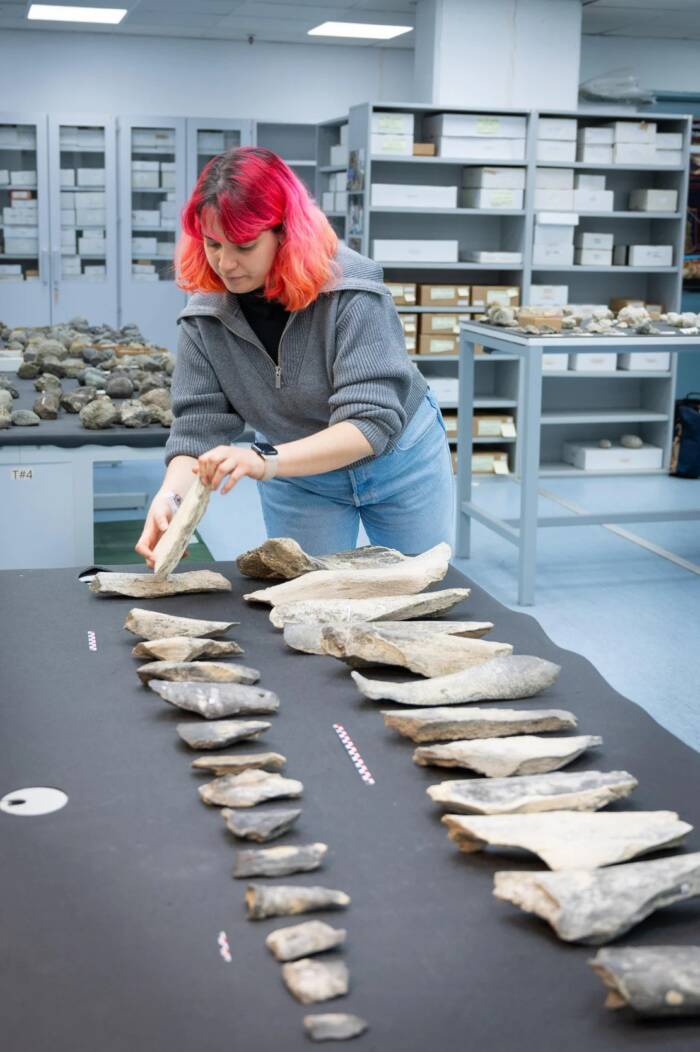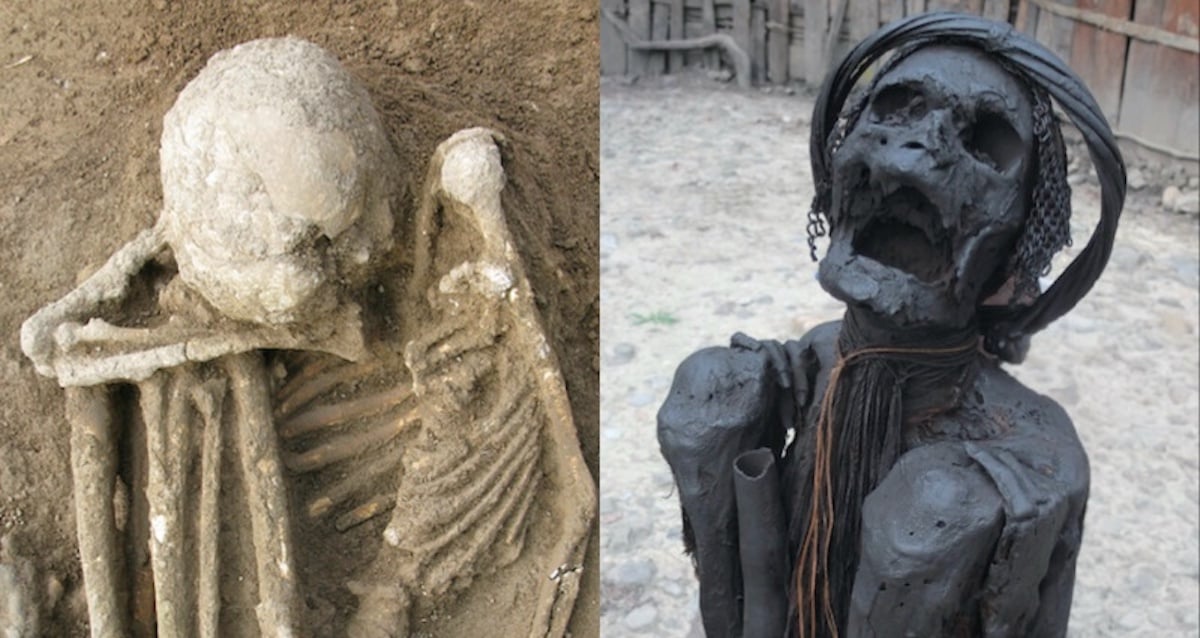“Unearthed Secrets: Ancient Bone Tools in Tanzania Could Rewrite the Story of Humanity’s Origins”
Imagine a time when your ancestors were out there with bone tools in hand, slicing meat from enormous hippos and elephants. It might sound like the plot of a prehistoric reality show, but this is the real deal! A recent discovery in Tanzania’s famous Olduvai Gorge has blown the minds of archaeologists, revealing that humans were crafting these animal bone tools a whopping 1.5 million years ago—yes, you read that right! This find not only pushes back the timeline of tool-making by over a million years but also hints at an unexpected level of intelligence in our early relatives. These early hominins weren’t just surviving; they were innovating! Curious about how these ancient tools were used and what they tell us about the minds of our ancestors? Let’s dig deeper into this fascinating chapter of our history. LEARN MORE
The animal bone tools, the oldest ever discovered, were likely used to remove meat from the carcasses of creatures like hippos and elephants.

CSICOne of the bone tools, which shows signs of being struck in order to create a sharpened edge.
Archaeologists have long believed that humans didn’t start crafting tools from bone until between 250,000 and 500,000 years ago. However, a 2018 excavation in Tanzania’s Olduvai Gorge turned up a cache of animal bone tools that have now been determined to be 1.5 million years old, pushing back the hominin tool technology timeline by more than one million years.
Made from elephant and hippo bones, the tools show distinct signs of being purposefully carved. This suggests that early humans had “more complex cognition” than experts believed and that they were capable of transferring their tool-making skills from stones to bones earlier than previously known.
Discovering The Animal Bone Tools At Olduvai Gorge In Tanzania
The discovery of the animal bone tools, as described in a new study published in Nature, took place in 2018 at Tanzania’s Olduvai Gorge.

CSICStudy lead Ignacio de la Torre holding one of the bone tools discovered in Tanzania.
At the site — where some of the earliest stone tools made by early hominins have also been found — researchers came across a rich cache of 27 carved and sharpened animal bones. The bones came from elephants and hippos, with the large elephant bone tools measuring up to 16 inches long and the slightly smaller hippo bone tools reaching lengths of 12 inches.
The bones show considerable signs of wear. Researchers say that prehistoric humans chipped away small flakes to create a sharp edge, similar to how early humans made tools out of stones (a process that is much older, with the earliest known stone tools dating back 3.3 million years). This “knapping” process allowed them to shape the bones into hand tools.

CSICThe bone tools tell a story about early humans and their ability to craft tools.
“The tools show evidence that their creators carefully worked the bones, chipping off flakes to create useful shapes,” study co-author Renata F. Peters of the University College London’s Institute of Archaeology explained in a statement. “We were excited to find these bone tools from such an early timeframe. It means that human ancestors were capable of transferring skills from stone to bone, a level of complex cognition that we haven’t seen elsewhere for another million years.”
So, how did early humans use these tools? And who exactly made them?
How Prehistoric People Used Animal Bone Tools
The early humans who crafted these tools were purposeful in the bones they chose — large, sturdy ones from specific animals like elephants and hippos — and how they carved them. By carefully knapping the animal bones, they created tools that had one sharpened edge and one pointed tip. The work on the bones is so deliberate that it’s clear that the bones were purposefully carved and not shaped through natural processes.
However, researchers don’t believe that early humans made these bone tools for hunting. Rather, they were likely used for scavenging and slicing off chunks of meat from elephant and hippo carcasses.

CSICCSIC conservator Ana Seisdedo handling the bone tools.
Scientists still aren’t 100 percent sure who exactly made the tools. Archaeologists have previously found evidence of the hominins Homo habilis, Homo erectus, and Paranthropus boisei near the Olduvai Gorge site at various points throughout history. So far, the researchers have been unable to link the bone tools with any particular group.
In the end, the discovery of bone tools at Olduvai Gorge has exciting implications for the study of prehistory. It suggests that early humans were capable of carving bones much earlier than previously thought, which, in turn, suggests that they had strong cognitive capabilities.
“This discovery leads us to assume that early humans significantly expanded their technological options, which until then were limited to the production of stone tools and now allowed new raw materials to be incorporated into the repertoire of potential artifacts,” study lead author Ignacio de la Torre of the CSIC-Spanish National Research Council said in the statement.














